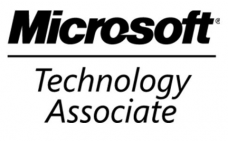 While the exam is still fresh in my head, I going to hand out some tips and suggestions for the CompTia Security Plus exam. I took the test one time, and passed with a 834/900.
While the exam is still fresh in my head, I going to hand out some tips and suggestions for the CompTia Security Plus exam. I took the test one time, and passed with a 834/900.
My Previous experience:
- A few weeks ago, I got my MTA Security Fundamentals, along with the CompTia Network+. The Network+ really came in handy for Security+.
- 10+ years in telecom, IS/IT/Development roles
- Lots of other certs… I’ve taken nearly all MTA certifications now, mostly thanks to WGU (Washington Governors University).
My study time/process/tools:
- I spent about 4 days preparing for this exam.
- My university provided an online tool called LabSim, provided by “TestOut”. This was a mix of videos, tables, quizzes, and hands-on simulated exercises. I did not really feel this was efficient use of my time, but 90% of my study time was spent using this source.
- I also had access to a UCertify Course as provided through WGU. I avoided this source.
- Professor Messer’s Security+ videos on Youtube. I watched about 10 of the ~200 of them. Those are really great, especially if you need a clear explanation on a topic you’re not getting.
What to focus on:
- If you don’t do ANYTHING else, at least memorize the protocols (and where they are used), ports, associated hashing or crypto algorithms, and categorization. The thing that helped me the most was the fact that I had all of the symmetric and asymmetric protocols and algorithms fully memorized. In fact, before I even started the test, I jotted them all out on the scratch paper, under their proper heading. I referred back to this table probably about 20 times.
- Know the “strongest” configuration for all areas: wireless networking, remote authentication, etc. There were quite a few “what is the most secure configuration” type questions.
- Don’t skip the chapter on the risk assessments and calculations… I skipped it and it cost me a few questions, I think. There were probably 7 or 8 questions about risk management, documentation and process.
- Know the terms involved with security threats. I was tempted to skip the chapters discussing worms and viruses, but I’m glad I didn’t because there were probably 20+ questions on phishing, worms, viruses, malware, spear fishing, vishing, pharming, rootkits, backdoors, trojan horses, etc. Make sure you REALLY know the difference between these, and the appropriate response to these security threats.
What to skip:
- The LabSim online training course I was using (provided by “TestOut”) went into a LOT of detail and hands-on exercises that I felt wasted a lot of time. They had me doing many tasks that were unrelated to security, such as dinking around with AD, adjusting network settings, etc. While it may help give context to some of the concepts, just keep in mind that every question on the real exam asked a SECURITY question. For example, on the real exam, I was never asked to configure a RADIUS server or anything close to that. But I WAS asked many, many questions regarding the protocols, ports, and algorithms used with RADIUS.
 Just got back from scoring a 97% on the Microsoft Technology Associate Exam for Security Fundamentals. I found it to be the easiest certification I’ve taken to date, however, here are some tips to help you prepare:
Just got back from scoring a 97% on the Microsoft Technology Associate Exam for Security Fundamentals. I found it to be the easiest certification I’ve taken to date, however, here are some tips to help you prepare: